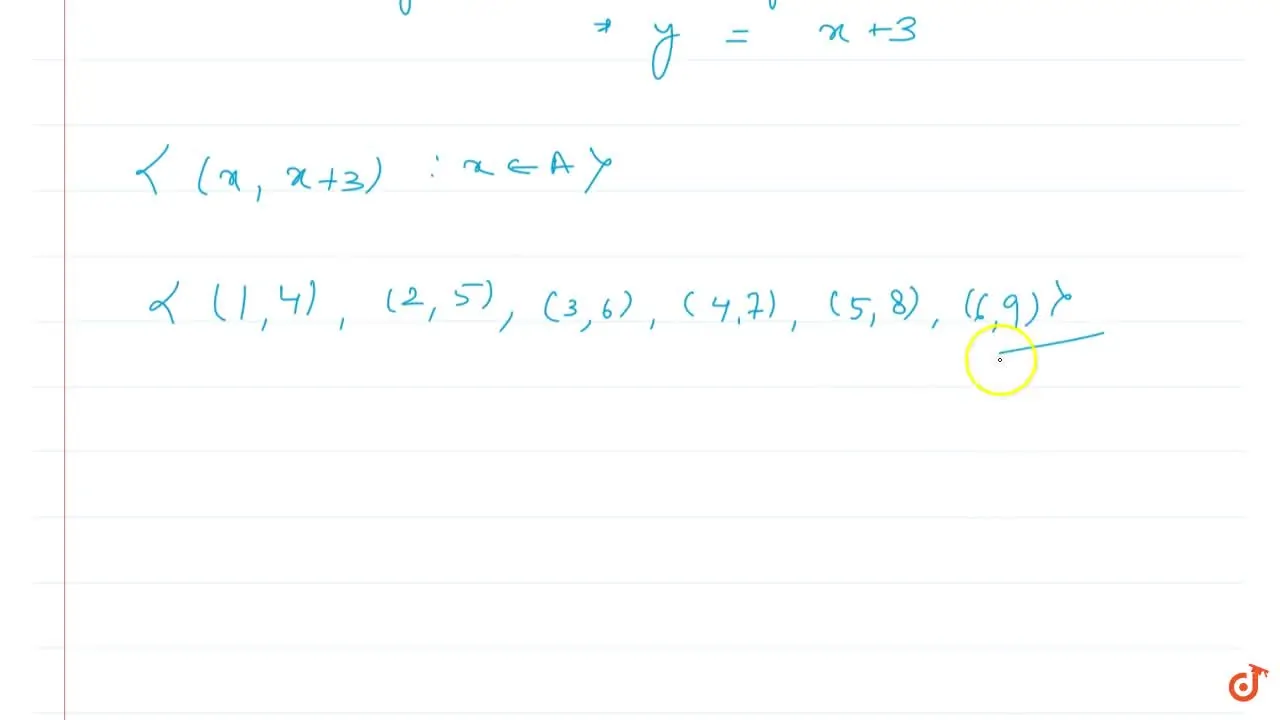Let and be the relation on defined by if for all . Prove that is an equivalence relation and also obtain the equivalence class .
(i) eflexivity
R is reflexive .
(ii) symmetry
Let
R is symmetric .
(iii) Transitivity
Let
R is transitive .,
thus ,R is reflexive , symmetric and transitive .
hence ,R is an equivalence relation .
Related Playlists
- BOOK - RS AGGARWALCHAPTER - RELATIONSEXERCISE - Exercise 1A12videos
RELATIONS
- BOOK - RS AGGARWALCHAPTER - RELATIONSEXERCISE - Exercise 1B13videos
RELATIONS
- BOOK - RS AGGARWALCHAPTER - PRODUCT OF THREE VECTORSEXERCISE - Objective Questions34videos
PRODUCT OF THREE VECTORS
- BOOK - RS AGGARWALCHAPTER - SCALAR, OR DOT, PRODUCT OF VECTORSEXERCISE - Exercise 2334videos
SCALAR, OR DOT, PRODUCT OF VECTORS
Similar Questions
Let A={1, 2, 3, , 9} and R be the relation on A×A defined by (a, b)R (c, d) if a+d=b+c for all (a, b), (c, d)∈A×A . Prove that R is an equivalence relation and also obtain the equivalence class [(2, 5)].
View SolutionLet A={1,2,3,...,9} and R be the relation in A×A defined by (a,b)R(c,d) if a+d=b+c for (a,b),(c,d) in A×A. Prove that R is an equivalence relation. Also obtain the equivalence class [25].
View SolutionLet A={1,2,3,......,12} and R be a relation in A×A defined by (a,b)R(c,d) if ad=bc∀(a,b),(c,d)∈A×A. Prove that R is an equivalence relation. Also obtain the equivalence class [34].
View SolutionLet N be the set of all natural numbers and let R be a relation on N×N , defined by (a, b)R (c, d)⇔ad=bc for all (a, b), (c, d)∈N×N . Show that R is an equivalence relation on N×N . Also, find the equivalence class [(2,6)].
View SolutionLet N be the set of all natural numbers and let R be a relation on N×N , defined by (a,b)R(c,d)⇔ad=bc for all (a,b),(c,d)∈N×N. . Show that R is an equivalence relation on N×N .
View SolutionProve that the relation R on the set N×N defined by (a, b)R ⇔(c, d)a+d=b+c for all (a, b), (c, d)∈N×N is an equivalence relation. Also, find the equivalence classes [(2, 3)] and [(1, 3)].
View SolutionLet A={1,2,3,4}. Let R be the equivalence relation on A×A defined by (a,b)R(c,d) iff a+d=b+c. Find {(1,3)}.
View SolutionStatement-1: The relation R on the set N×N defined by (a, b) R (c, d) ⇔ a+d = b+c for all a, b, c, d ∈ N is an equivalence relation.
Statement-2: The union of two equivalence relations is an equivalence relation.View SolutionLet R be a relation on N × N defined by (a,b)R(c,d)⇔a+d=b+c for all (a;b),(c,d)∈N×N show that (a,b)R(a,b) for all (a,b)∈N×N
View SolutionLet Z be the set of all integers and R be the relation on Z defined as R={(a,b);a, b ∈Z, and (a−b) is divisible by 5}. Prove that R is an equivalence relation.
View Solution


